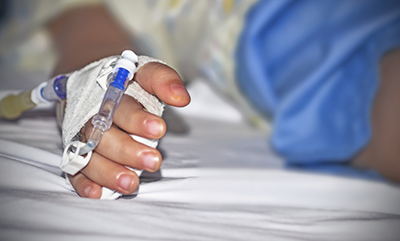Study Establishes ‘Recovery Curves’ for Young Burn Survivors.
 Most young pediatric burn survivors get better over time and may surpass their peers in domains such as language, play, and emotional behavior, says a new study led by a School of Public Health researcher.
Most young pediatric burn survivors get better over time and may surpass their peers in domains such as language, play, and emotional behavior, says a new study led by a School of Public Health researcher.
The study, in JAMA Pediatrics, describes multi-dimensional outcomes for children younger than 5 years old who have survived burns over more than 20 percent of their bodies or on critical areas such as the face or hands. The long-term cohort study establishes “recovery curves” tailored to pediatric burn survivors that can assist clinicians in identifying functional areas in which young survivors are on track or surpass the status of their peers.
“Advances in clinical care during the past 30 years have decreased burn mortality, especially among children,” said lead author Lewis Kazis, professor of health law, policy & management, who headed a large national team of investigators that included surgeons, primary care doctors, and other providers. “The current inability to predict the optimal course of recovery for a pediatric burn survivor is an impediment to both evaluating outcomes of these interventions and advising families on the type of services that would be most effective.”
The study surveyed more than 330 pediatric burn survivors at 12 burn centers, from 1999 through 2008. Researchers found “significant improvement” in language, gross motor skills, and other domains during the first four years after the burn injury. Outcomes were followed prospectively for up to four years, with some survivors lagging in the areas of play and gross motor skills, compared to their peers. Also, parents’ perceptions of their children’s worry or concern continued to increase over four years, suggesting that parents might benefit from education or counseling in the year or two after the burn injury.
“This study provides evidence that may alleviate some common parental concerns,” the authors said. “Pediatric burn survivors get better over time and may even approach the functional level of non-burned peers on some of the most important domains, including play, fine motor skills, and gross motor skills. This underscores the resiliency of children after their burn injury.”
Besides Kazis, researchers came from more than a dozen institutions, including the Shriners Hospitals for Children system. Other BU co-authors at the time of the study include Nien-Chen Li, Xinhua Ren, and Marina Soley-Bori.